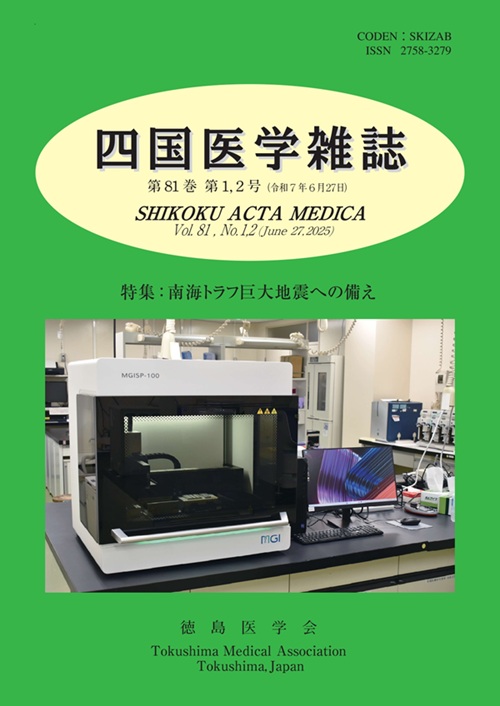Current issue
Displaying 1-12 of 12 articles from this issue
- |<
- <
- 1
- >
- >|
-
Article type: Special issue
2025 Volume 81 Issue 1.2 Pages 3-8
Published: June 27, 2025
Released on J-STAGE: July 09, 2025
Download PDF (2101K) -
Article type: Special issue
2025 Volume 81 Issue 1.2 Pages 9-12
Published: June 27, 2025
Released on J-STAGE: July 09, 2025
Download PDF (574K) -
Article type: Special issue
2025 Volume 81 Issue 1.2 Pages 13-16
Published: June 27, 2025
Released on J-STAGE: July 09, 2025
Download PDF (633K) -
Article type: Special issue
2025 Volume 81 Issue 1.2 Pages 17-20
Published: June 27, 2025
Released on J-STAGE: July 09, 2025
Download PDF (676K) -
Article type: review
2025 Volume 81 Issue 1.2 Pages 21-24
Published: June 27, 2025
Released on J-STAGE: July 09, 2025
Download PDF (2321K) -
Article type: review
2025 Volume 81 Issue 1.2 Pages 25-32
Published: June 27, 2025
Released on J-STAGE: July 09, 2025
Download PDF (1847K) -
2025 Volume 81 Issue 1.2 Pages 33-40
Published: June 27, 2025
Released on J-STAGE: July 09, 2025
Download PDF (1301K) -
2025 Volume 81 Issue 1.2 Pages 41-44
Published: June 27, 2025
Released on J-STAGE: July 09, 2025
Download PDF (793K) -
2025 Volume 81 Issue 1.2 Pages 45-52
Published: June 27, 2025
Released on J-STAGE: July 09, 2025
Download PDF (2268K) -
2025 Volume 81 Issue 1.2 Pages 53-58
Published: June 27, 2025
Released on J-STAGE: July 09, 2025
Download PDF (1762K) -
2025 Volume 81 Issue 1.2 Pages 59-64
Published: June 27, 2025
Released on J-STAGE: July 09, 2025
Download PDF (1176K) -
2025 Volume 81 Issue 1.2 Pages 65-68
Published: June 27, 2025
Released on J-STAGE: July 09, 2025
Download PDF (655K)
- |<
- <
- 1
- >
- >|
